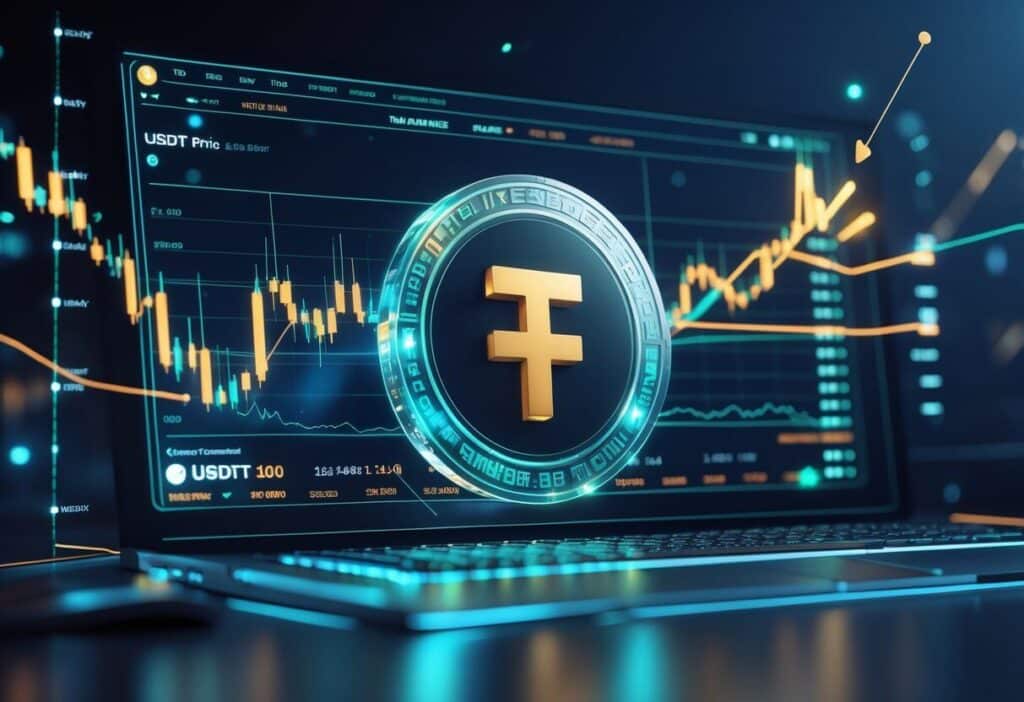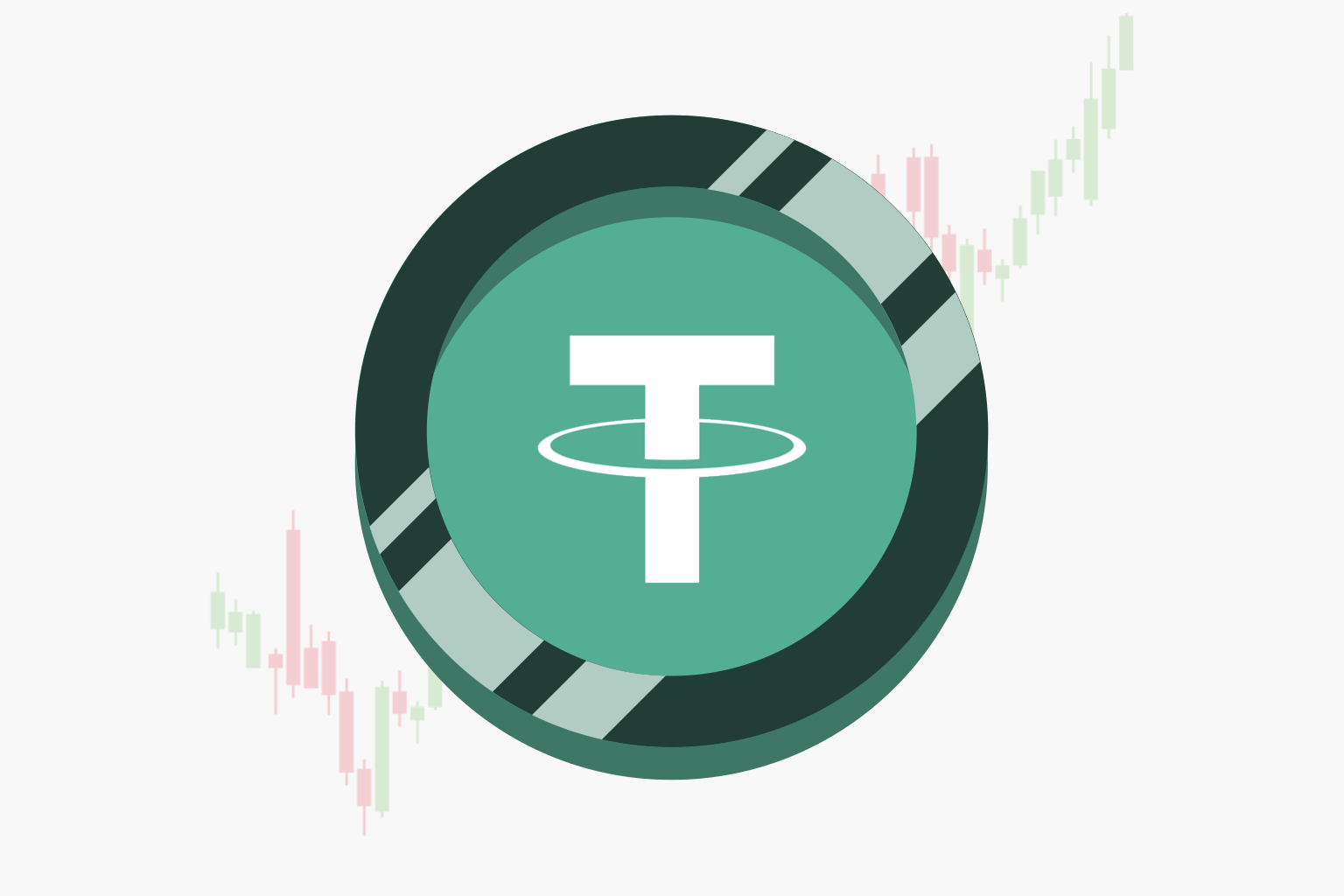USDT, or Tether, currently trades at approximately $1.00 USD with a 24-hour trading volume exceeding $198 billion, making it one of the most actively traded cryptocurrencies in the market. As the world’s leading stablecoin, USDT maintains its value by being pegged to the US dollar, providing traders and investors with a digital asset that offers stability amid volatile crypto markets.

I’ll walk you through everything you need to know about USDT’s current price performance, from real-time market data to the key factors that influence its value. Founded by Craig Sellars, Brock Pierce, and Reeve Collins in 2014, Tether has become the backbone of cryptocurrency trading, serving as a bridge between traditional fiat currencies and digital assets.
Understanding USDT’s price dynamics is crucial whether you’re trading cryptocurrencies, looking for portfolio stability, or simply curious about how stablecoins maintain their dollar peg. I’ll cover the latest market movements, trading statistics, and answer the most common questions about this dominant stablecoin’s pricing mechanisms.
Live USDT Price & Change

The current USDT to INR conversion rate is ₹87.58, showing minimal fluctuations typical of stablecoin behavior. Tether USDT has demonstrated a slight upward trend of 0.05% over the past 30 days against the Indian Rupee.
Intraday Chart (1 Day)
Today’s USDT price movements show ₹87.59 with a modest 0.02% increase from yesterday’s closing rate. The intraday trading has remained within a tight range, reflecting Tether USDT’s designed stability as a USD-pegged cryptocurrency.
Recent hourly data indicates minimal volatility patterns. The price has oscillated between ₹87.57 and ₹87.76 throughout the current trading session.
Key Intraday Metrics:
- Current Price: ₹87.58-₹87.76 INR
- 24h Change: +0.01% to +0.02%
- Intraday Range: ₹87.57 – ₹87.76
The live Tether price on Binance shows ₹87.76 with positive momentum, while other exchanges report similar values within the expected range for USDT.
Historical Chart (1 Year)
Historical analysis reveals that USDT reached its all-time high of ₹106.37 on February 25, 2015. This peak occurred during significant USD-INR exchange rate fluctuations rather than Tether USDT instability.
The weekly performance data shows consistent trading patterns:
| Date | 1 USDT to INR | 24h Change |
|---|---|---|
| Aug 16, 2025 | ₹87.59 | 0.02% |
| Aug 15, 2025 | ₹87.57 | -0.21% |
| Aug 14, 2025 | ₹87.75 | 0.31% |
| Aug 13, 2025 | ₹87.48 | -0.11% |
Over the past month, Tether USDT has maintained remarkable stability with only a 0.1% increase against the Indian Rupee. This performance aligns with its primary function as a stable store of value in the cryptocurrency ecosystem.
The annual trend shows USDT prices primarily reflecting USD-INR exchange rate movements rather than cryptocurrency market volatility.
Key Stats (Bullets)

• Current Price: USDT trades at $1.0000 with a stable peg to the US dollar
• Market Cap: $165 billion, making it the largest stablecoin by market capitalization
• 24-Hour Volume: $29 billion in trading volume, often exceeding Bitcoin and Ethereum
• Market Share: 68.2% of the global stablecoin market as of March 2025
• Reserve Backing: Over 84% held in cash, cash equivalents, and short-term U.S. Treasuries
• Blockchain Networks: Available on 13 different blockchains including Ethereum, Tron, and BNB Chain
• Supply Distribution:
- Tron: 51.6 billion tokens
- Ethereum: 35.4 billion tokens
- Other networks: Remaining supply
• Payment Usage: Facilitates cross-border settlements and remittances in emerging markets
• Transparency Measures: Monthly reserve breakdowns published starting Q3 2024 with independent attestation reports
• Revenue Performance: Generated $17.8 million in 30-day revenue, leading all crypto projects
• Audit Process: Regular attestations confirm reserve composition and maintain the 1:1 U.S. dollar peg
• Geographic Adoption: Asia accounts for 45% of global USDT volume, with strong adoption in Latin America and Africa
Latest News & Drivers

I’ve observed significant developments shaping USDT’s trajectory in recent months. Tether’s USDT supply increased by $26 billion in 2025, pushing its market cap to $163.6 billion as global stablecoin demand grows.
The company’s financial performance remains strong. Tether reported $5.7 billion profit in the first six months of 2025, representing a 9.6% increase compared to the same period in 2024.
Key Market Developments:
- Circle’s USDC captured 63% of crypto salary payments in 2024, despite USDT’s trading dominance
- Coinbase reduced fee-free USDC conversions to $5 million after missing revenue expectations
- Twenty One Capital, backed by Tether and Cantor Fitzgerald, now holds over 43,500 BTC
I notice regulatory developments affecting the cryptocurrency landscape. The US GENIUS Act creates potential competitive disadvantages for domestic stablecoin issuers compared to foreign alternatives.
Strategic partnerships continue expanding. Tron, Tether, and TRM Labs welcomed Binance as their first T3+ partner in their crime-fighting initiative as crypto security challenges intensify.
The crypto market shows sustained institutional adoption. Tether and Rumble offered $1.17 billion to acquire Northern Data, demonstrating USDT’s role in major corporate transactions.
Tether Gold’s market cap surged past $800 million as physical gold hits record highs, expanding the company’s product ecosystem beyond traditional stablecoins.
What Moves USDT?
I observe that USDT operates as a stablecoin designed to maintain a 1:1 peg with the US dollar. Several key factors influence its price movements and market behavior.
Market liquidity plays the most significant role in USDT’s stability. When trading volumes increase across exchanges, I notice the stablecoin can experience minor price fluctuations above or below its dollar peg.
The underlying blockchain infrastructure affects USDT’s accessibility and transaction costs. I see that USDT operates on multiple networks including Ethereum, Tron, and Binance Smart Chain, each impacting its utility.
Key factors that move USDT include:
- Market demand during crypto trading surges
- Regulatory announcements affecting stablecoins
- Tether Limited’s reserve transparency reports
- Exchange premium or discount pressures
- Cross-chain arbitrage opportunities
In decentralized finance applications, I find that USDT demand fluctuates based on DeFi protocol yields and lending rates. Higher yields in DeFi platforms often increase demand for this digital token.
Regulatory scrutiny represents another major influence I monitor. Government policies regarding stablecoin reserves and backing requirements can create temporary price volatility.
I also track arbitrage trading between different exchanges and blockchain networks. Price differences across platforms create opportunities that help maintain USDT’s stability through market forces.
The stablecoin’s role as a trading pair affects its movement patterns. When I analyze major crypto market events, USDT often experiences increased demand as traders seek stability.
Trading Hours & Settlement

USDT trading operates 24/7 across global cryptocurrency exchanges. I can buy or sell USDT at any time of day without traditional market closures.
Unlike stock markets, crypto exchanges never close. This means I have continuous access to USDT trading opportunities throughout the week.
Key Trading Features:
- 24-hour availability
- No weekend breaks
- Global market access
- Real-time price updates
Settlement for USDT transactions typically occurs within minutes. When I complete a trade, the USDT transfers to my wallet almost instantly.
The crypto market timings in India show that Indian traders can access USDT markets at any hour. Peak trading volumes often align with major market sessions.
Settlement Timeframes:
- Spot trades: Immediate
- Wallet transfers: 2-10 minutes
- Exchange deposits: 5-30 minutes
I should note that while trading is always available, some exchanges may have brief maintenance windows. These typically last 30 minutes to 2 hours and are scheduled during low-volume periods.
Network congestion can occasionally delay settlements. During high-traffic periods, USDT transactions on Ethereum or Tron networks might take longer than usual.
Most major exchanges process USDT trades instantly during normal conditions. I can monitor my transaction status through blockchain explorers for complete transparency.
Related Indices & ETFs
I’ve observed that USDT exposure through traditional indices and ETFs remains limited compared to other cryptocurrencies. Most cryptocurrency ETFs focus on Bitcoin and Ethereum rather than stablecoins like USDT.
Direct USDT ETFs are currently unavailable in major markets. This reflects regulatory hesitancy around stablecoin investment products.
However, I can identify several indirect exposure methods:
| Blockchain Network | USDT Integration | Available ETFs |
|---|---|---|
| Ethereum | Primary network | Multiple ETH ETFs available |
| Tron | Major USDT issuer | Limited options |
| Avalanche | Growing USDT usage | Emerging products |
| Algorand | USDT support | Minimal exposure |
Major exchange-traded funds typically avoid stablecoin holdings. Instead, they concentrate on volatile cryptocurrencies with price appreciation potential.
I notice that Ethereum-based ETFs provide the closest indirect USDT exposure. Since USDT heavily utilizes Ethereum’s network, Ethereum’s success correlates with USDT transaction volume.
Tron hosts significant USDT transactions, particularly in Asia. However, dedicated Tron ETFs remain scarce in Western markets.
Avalanche, EOS, and Algorand support USDT but represent smaller portions of total USDT circulation. Investment products focusing on these networks offer minimal stablecoin correlation.
The cryptocurrency ETF landscape continues evolving. I expect future products may incorporate stablecoin exposure as regulatory frameworks develop.
Common Questions On USDT Price Data
USDT price data updates in real-time during active trading hours, with the index remaining inactive during weekends when traditional markets close. Direct trading of price indices is not possible, though traders can access USDT through various cryptocurrency exchanges.
How Often Is The Price Updated?
USDT price data updates continuously during active trading periods across major cryptocurrency exchanges. Most platforms refresh price information every few seconds to reflect current market conditions.
The frequency depends on trading volume and market activity. During high-volume periods, I observe price updates occurring multiple times per minute across different exchanges.
Real-time data sources include:
- Major cryptocurrency exchanges
- Trading platforms
- Price aggregation services
- Market data providers
Price discrepancies between exchanges create arbitrage opportunities. When USDT dips below $1 on an exchange, traders buy up USDT, expecting to redeem it at face value.
The 24/7 nature of cryptocurrency markets means USDT pricing never truly stops updating. However, update frequency may decrease during periods of lower trading activity.
Why Doesn’t The Index Trade On Weekends?
USDT itself trades continuously on cryptocurrency exchanges, but traditional financial indices often pause during weekends. This creates a disconnect between crypto markets and traditional market hours.
Many institutional investors and traditional financial platforms operate on standard business schedules. Their reduced weekend activity affects overall trading volumes and price discovery mechanisms.
Weekend trading limitations include:
- Reduced institutional participation
- Lower overall trading volumes
- Limited fiat currency on/off ramps
- Banking system closures
Cryptocurrency exchanges remain operational throughout weekends. However, the reduced participation from traditional finance sectors can lead to different price dynamics during these periods.
Can I Trade The Index Directly?
Direct trading of USDT price indices is not possible since indices serve as reference points rather than tradeable assets. Instead, I can trade the underlying USDT tokens on various cryptocurrency exchanges.
USDT tokens are available on major exchanges including Binance, Coinbase, and others. The current price of Tether in India is ₹87.64 per USDT, showing regional price variations.
Trading options include:
- Spot trading on exchanges
- USDT pairs with other cryptocurrencies
- Futures contracts
- Options derivatives
Some platforms offer index-based products that track USDT performance. These derivative instruments provide exposure to USDT price movements without direct token ownership.
The stability mechanism of USDT relies on reserves backing each token. This backing system maintains the approximate $1.00 peg that makes direct trading viable for users seeking stable value storage.





